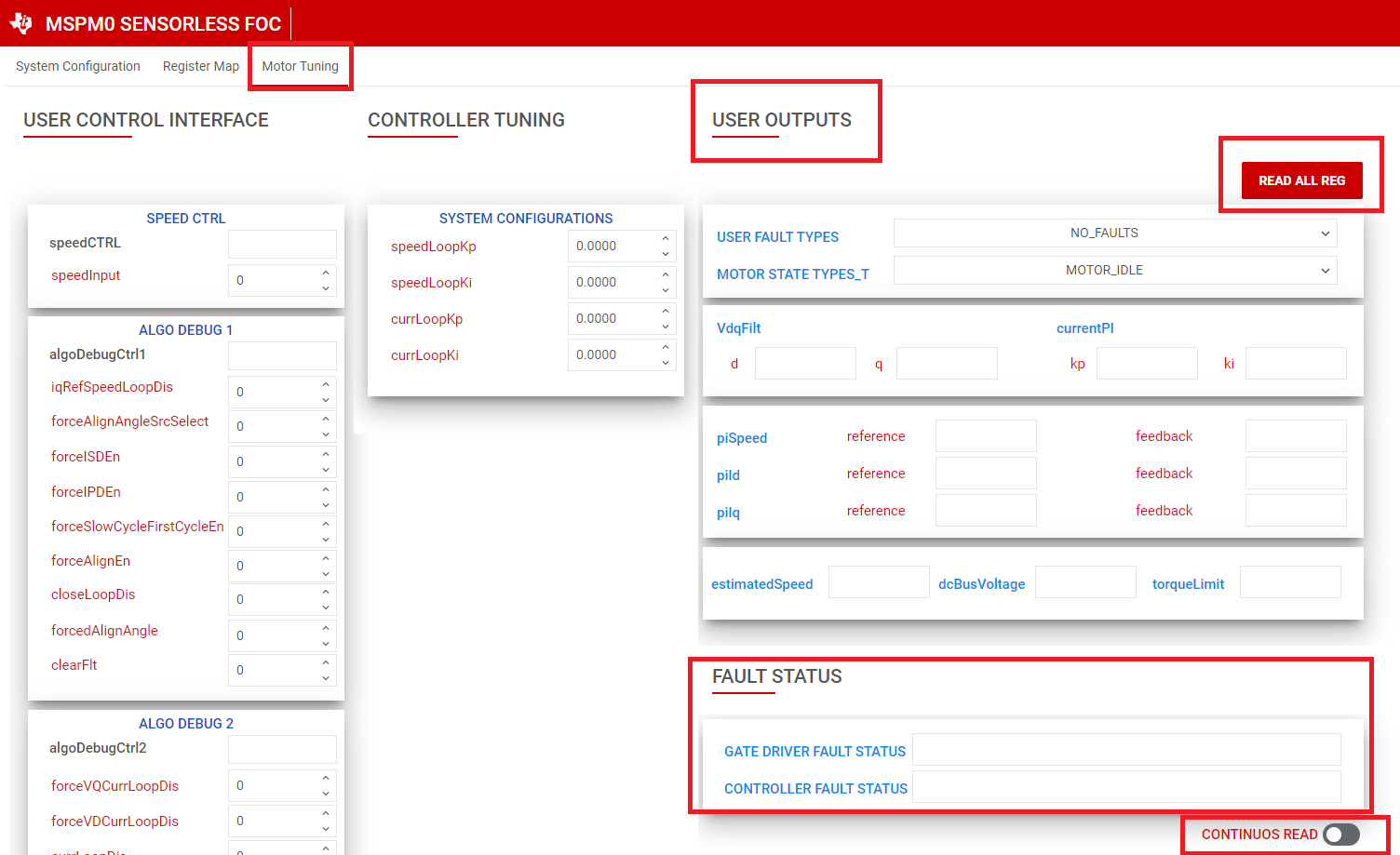SLAU927 March 2024 MSPM0G3507
- 1
- Abstract
- Trademarks
- 1Introduction
-
2Hardware Setup
- 2.1 EVM Hardware Setup
- 2.2 Pin Configurations for IPD Usage
- 2.3 Pin Configurations for PWM Outputs
- 2.4 Pin Configurations for ADC Currents
- 2.5 Pin Configurations for ADC Voltages
- 2.6 Pin Configurations for Faults
- 2.7 Pin Configurations for GPIO Output Functions
- 2.8 Pin Configurations for SPI Communication
- 2.9 Pin Configurations for UART Communication
- 2.10 External Connections for Evaluation Boards
- 3Software Setup
- 4GUI Setup
- 5Register Map
- 6Basic Tuning
-
7Advanced Tuning
- 7.1
Control Configurations Tuning
- 7.1.1 Initial Speed Detection of the Motor for Reliable Motor Resynchronization
- 7.1.2 Unidirectional Motor Drive Detecting Backward Spin
- 7.1.3 Preventing Back Spin of Rotor During Startup
- 7.1.4 Gradual and Smooth Start up Motion
- 7.1.5 Faster Startup Timing
- 7.1.6 Stopping Motor Quickly
- 7.1.7 Preventing Supply Voltage Overshoot During Motor Stop.
- 7.1.8 Protecting the Power supply
- 7.2 Hardware Configurations
- 7.1
Control Configurations Tuning
- 8Revision History
6.2.2.2 Testing for Successful Startup into Closed Loop
- Apply a nonzero speed command
Change the "Speed Input Command" to a nonzero value. When the speed command is issued, the device starts to commutate and the motor spins at a speed that is proportional to Speed Command × MAXIMUM MOTOR SPEED / 32767.

Figure 6-10 Setting Speed Input From GUI - Check if motor spins in closed loop at commanded speed.
Enable the "Continous Read status" toggle button towards the bottom right corner of the GUI and monitor the Fault Status register. If no faults is triggered, move to the Section 7 section.

Figure 6-11 Reading Fault Status From GUI - If any fault is triggered, tune the configuration for fault handling using these steps:
- Set zero speed command by setting the Speed Input command to 0.
- Clear the fault status registers by setting the clear fault bit (ClearFlt) bit in the ALGO DEBUG CTRL1 register.
- Check Section 6.3 for steps to debug faults.